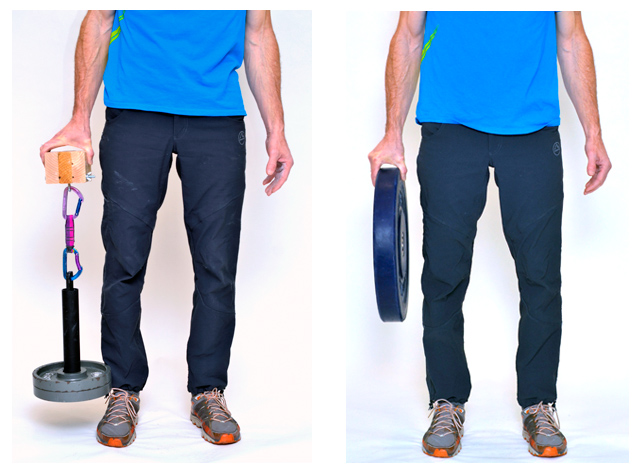Wrist Stabilizer and Finger Extensor Training
The finger flexor muscles (of the forearm) are the target of most climbing-specific exercises, and rightfully so–lack of finger strength and endurance often seem to be the limiting constraint when climbing near your limit. (Of course, technical and mental deficiencies may be causing you to waste precious grip strength and energy.) Often overlooked–and equally important–are the antagonist muscles of the lateral forearm that extend the fingers and stabilize the wrist. A large strength deficit in these finger/wrist extensor muscles is a covert limiting factor in grip strength and, long-term, can lead to lateral elbow pain and injury. Consequently, a climber serious about increasing grip/pinch strength and reducing injury risk would be wise to engage in some regular strength training of these vital, yet commonly ignored, antagonist muscles. You should also look into nutritional interventions to support collagen synthesis and promote tendon health and strength.
Following are two exercises that every climber should perform at least twice weekly. (Next month I’ll present two more excellent exercises for training the extensor muscles of the lateral forearm.)

Warming up the finger extensors with Powerfingers.
Finger Extension Against Rubber Band
Okay, let me get this one out of the way first, as rubber-band finger extensor training is quite popular. Interestingly, use of a rubber band (or similar) to extend your fingers against is sufficient only for the purposes of warm-up, beginner strength training, and rehabilitation from injury. I recommend use of Powerfingers (see photo) to warm up before climbing and in advance of the more stressful finger extensors exercises. Extend your fingers against the Powerfingers (or a rubber band) for 15 to 25 repetitions. If strength training (rather than warming up), do a second and third set with higher resistance (Powerfingers come in 5 different resistances); although use of the exercise below–and other weighted forearm extensor training–is essential to develop the higher levels of extensor strength and wrist stabilization needed for high-end climbing.
Wide Pinch with Wrist Extension
This novel exercise is absolutely essential, as it strengthens the extensor muscles with the fingers fully extended to mimic grabbing open-hand and wide pinch holds in climbing. It may seem like a small distinction, but the wrist extensors function a bit differently when the fingers are straight (extended) compared with when the fingers are flexed, as in crimping or holding a dumbbell. Of course, doing this exercise will also help you develop crushing grip strength–so doing this exercise kills two birds with one stone!
Until there’s a commercially available device for training the wide pinch grip, you’ll need to kludge something that will work. Screwing together two or three pieces of 2×4 wood blocks is a cheap, effective solution—consider making two sizes, wide and extra-wide. Another option is pinching a thick bumper weight plate. Anyway, the exercise is straightforward: Standing upright with good posture, pinch the wood block or bumper plate with a straight arm and extended wrist; hold this position for ten to thirty seconds.
Initially, I suggest training for endurance, which will require a light weight that allows a full thirty-second hold. Do three with each hand with at least a minute rest in between. Longer term, consider using a heavier weight that allows only a ten-second hold. In this case, do three consecutive ten-second pinches with the same hand, resting only thirty seconds between each one. Do a total of three sets of three reps with each hand, resting for about three minutes between sets.
NOTE: While pinching in an overhead arm position (possible with some fingerboard designs) is a quality pinch-training exercise, hanging from an overhead arm position does not engage the wrist stabilizers in the same (ideal) way as in doing the exercise shown above. An optimal pinch and extensor training program should include pinch training with both arm positions.


